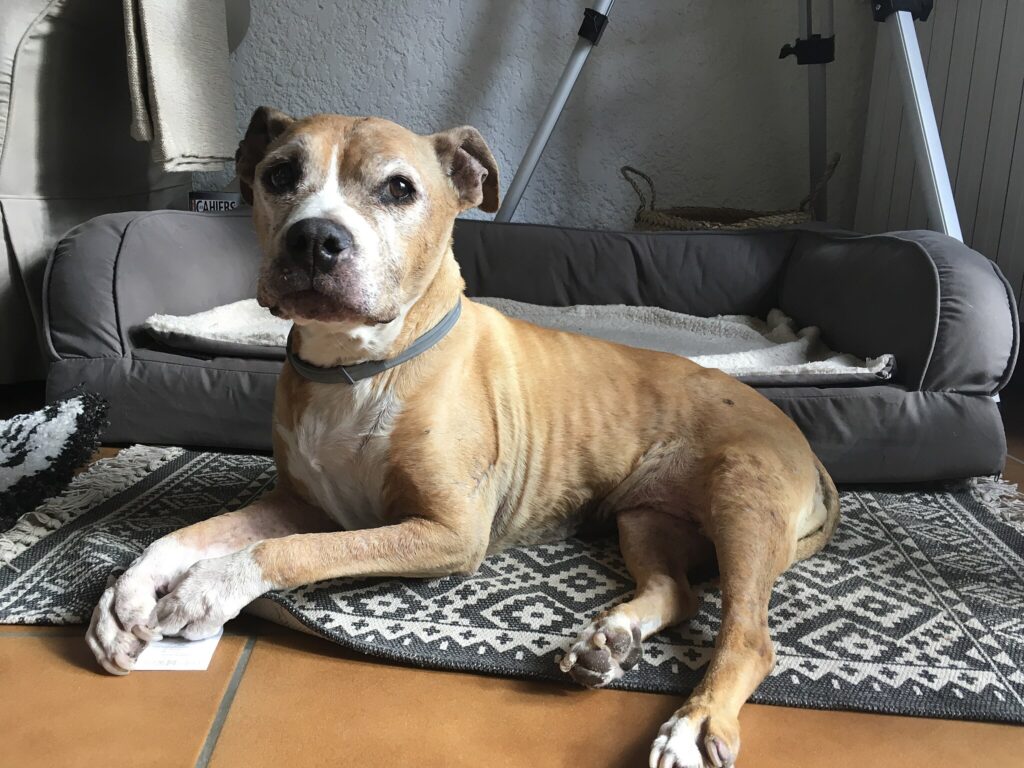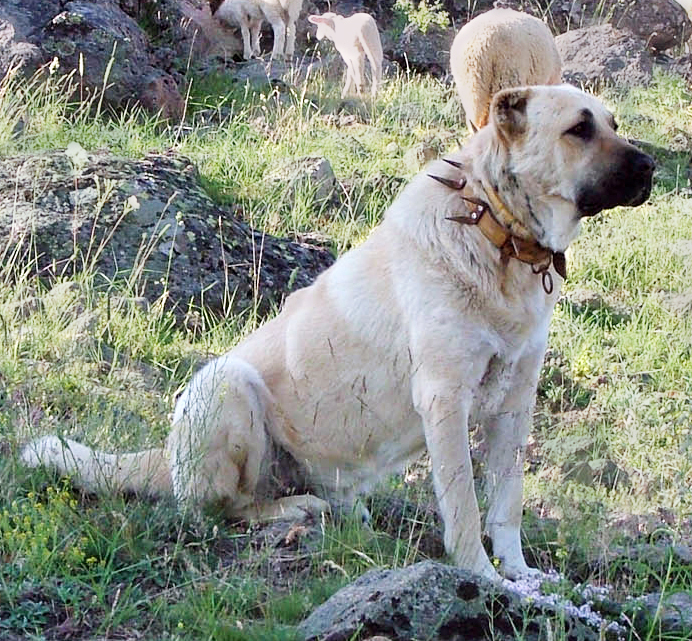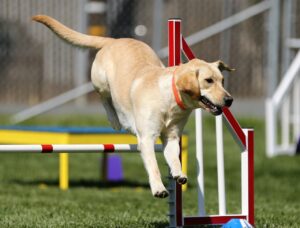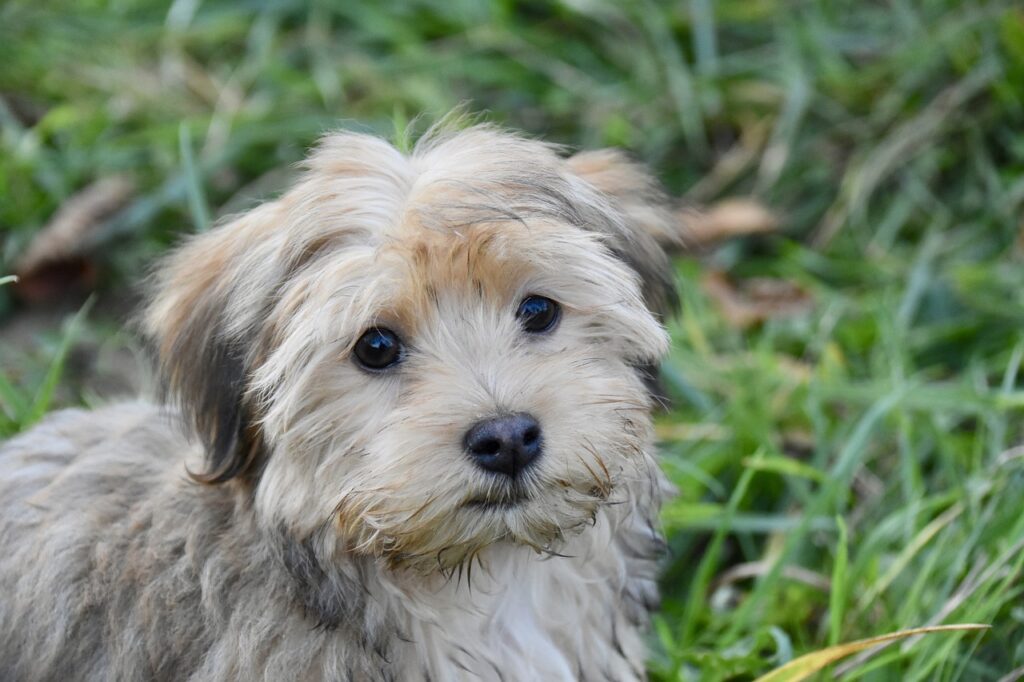Explore dogs like never before! Get expert training tips, discover effective training tips for dogs, and learn essential care techniques to keep your furry friend happy and healthy.
Welcome to the captivating world of dog breeds! Whether you’re a seasoned dog lover or a curious newcomer, our comprehensive guide to dog breeds offers a delightful journey through the diverse and fascinating canine kingdom. Dogs come in all shapes, sizes, and personalities, each breed carrying unique traits that make them special companions. From loyal Labrador Retrievers to playful Pomeranians, our detailed profiles will help you discover the perfect breed to match your lifestyle and preferences. Join us as we explore the rich history, distinctive characteristics, and endearing quirks of man’s best friend, and find your ideal four-legged friend today!
American Staffordshire Terriers
Discover the loyal and protective American Staffordshire Terrier. Learn about their personality, training tips, and health care to find the..
Learn more interesting things about the American Stafford dog breed – Click here
Kangal dog
Discover the loyal and powerful Kangal dog. Learn about their history, temperament, and why they’re the ultimate guardians for your home and family, making them the perfect companions for those seeking a protective yet gentle breed.
Learn interesting things about the Kangal dog breed – Click here
Central Asian Shepherd, Guardian of the Steppes
The Central Asian Shepherd is a majestic breed that embodies strength, loyalty, and intelligence.The Central Asian Shepherd stands out for its unique characteristics and suitability as a family pet or guardian.
Learn more about the Central Asian Shepherd – Click here
Labrador Retriever
The Labrador Retriever is one of the most beloved dog breeds worldwide, known for its friendly demeanor and boundless energy.
Learn more about the Labrador Retrievers – Click here
German Sheperd
If you’re ready for a devoted, intelligent companion who will be just as happy joining you on outdoor adventures as cuddling on the couch, a German Shepherd might be the perfect dog for you.
Learn more about the German Shepherds – Click here
Related: Bio Protect Plus – First & Only Vet-Formulated Dog Supplement
How to Train a Dog & Dog Obedience Training
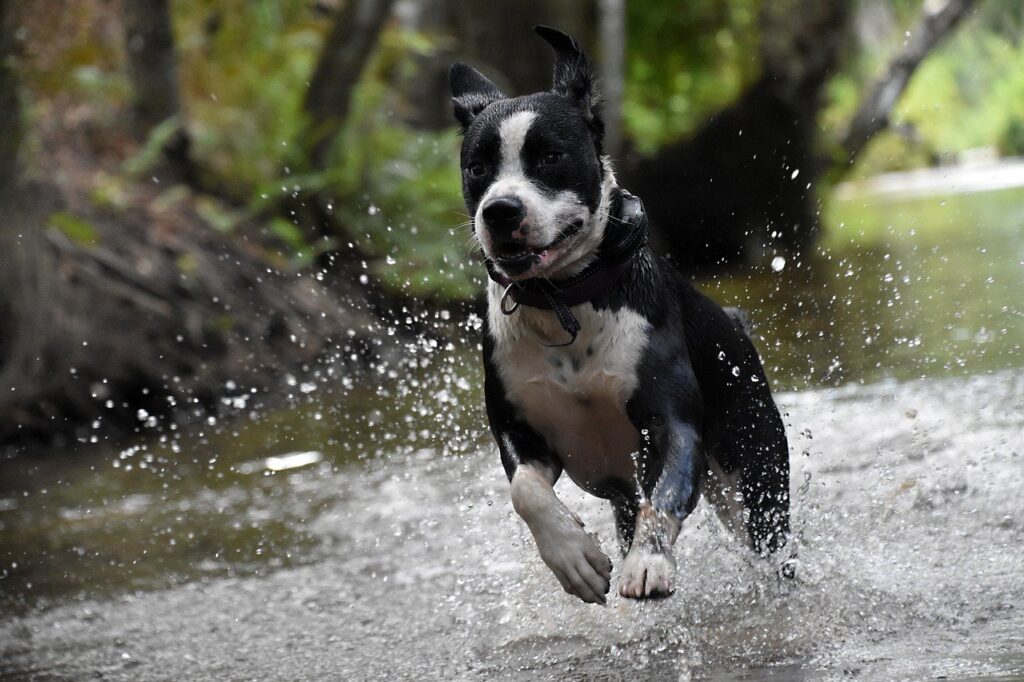
Training your dog is an essential part of responsible pet ownership. It not only helps in managing your furry friend’s behavior but also strengthens the bond between you and your canine companion.
Learn more about dog training – Click here
Golden Retrievers: The Sunshine Dogs That Capture Hearts
Golden Retrievers are not just dogs; they are family members, companions, and loyal friends. With their friendly demeanor and intelligence, they have become one of the most beloved breeds worldwide.
Learn more about the Golden Retrievers – Click here
Bulldogs: The Lovable Wrinkly-Faced Charmers

Bulldogs, with their distinctive wrinkled faces and stocky builds, have captured hearts around the world.
These charismatic dogs have come a long way from their fighting origins to become beloved family companions.
Let’s dive into the world of Bulldogs and discover what makes these squish-faced pups so irresistible.
The Fascinating History of Bulldogs
The Bulldog’s story begins in 13th century England, where they were originally bred for the brutal sport of bull-baiting.
Their name quite literally comes from their purpose – to bait bulls.
These early Bulldogs were fiercer and more athletic than the breed we know today.
When bull-baiting was banned in 1835, the Bulldog faced extinction.
However, dedicated breeders worked to transform the breed into a gentler companion dog.
They emphasized friendly temperaments and reduced the Bulldog’s size, creating the lovable, wrinkly dogs we adore today.
Physical Characteristics of Bulldogs
Bulldogs are medium-sized dogs with a distinctive appearance that’s hard to miss.
They typically stand 14-15 inches tall at the shoulder and weigh between 40-50 pounds.
The most notable features of Bulldogs include:
- A large, square head with a short, wrinkled muzzle
- A pronounced underbite
- Loose, saggy skin, especially around the head and shoulders
- A compact, muscular body with short legs
- A short, straight tail
Bulldogs come in various colors, including brindle, white, red, fawn, and piebald.
Their short, smooth coats are relatively easy to maintain.
The Endearing Temperament of Bulldogs
Despite their tough-looking exterior, modern Bulldogs are known for their gentle, affectionate nature.
These dogs are typically calm, dignified, and incredibly patient, making them excellent companions for families with children.
Bulldogs are often described as “people dogs” – they love nothing more than being close to their human family members.
While not particularly energetic, Bulldogs have a playful side and enjoy short bursts of activity.
Their easygoing nature means they generally get along well with other pets when properly socialized.
Bulldogs are known for their stubbornness, which can make training a bit challenging at times.
However, their desire to please their owners usually wins out in the end.
Training Your Bulldog
Training a Bulldog requires patience, consistency, and a good sense of humor.
These dogs can be stubborn and may lose interest quickly if training sessions are too long or repetitive.
Short, positive training sessions work best for Bulldogs.
They respond well to praise and food rewards, but be careful not to overdo the treats – Bulldogs are prone to obesity.
Early socialization is crucial for Bulldogs to ensure they grow into well-mannered adults.
Expose your Bulldog puppy to a variety of people, animals, and situations from a young age.
While Bulldogs may not excel in agility or obedience competitions, they can learn basic commands and make wonderful therapy dogs.
Exercise Needs of Bulldogs
Bulldogs have relatively low exercise needs compared to many other breeds.
A couple of short walks daily and some playtime are usually sufficient to keep a Bulldog happy and healthy.
However, it’s important not to over-exercise Bulldogs, especially in hot weather.
Their short muzzles make them prone to breathing difficulties, and they can overheat easily.
Some fun, low-impact activities for Bulldogs include:
- Short walks in cool weather
- Indoor play sessions with toys
- Gentle games of tug-of-war
- Swimming (with supervision, as Bulldogs are not natural swimmers)
Remember, mental stimulation is just as important as physical exercise for Bulldogs.
Puzzle toys and short training sessions can help keep their minds engaged.
Health Considerations for Bulldogs
Bulldogs are prone to several health issues, largely due to their unique physical characteristics.
Some common health concerns in Bulldogs include:
- Brachycephalic Airway Syndrome (due to their flat faces)
- Hip dysplasia
- Skin fold dermatitis
- Cherry eye
- Overheating
Regular veterinary check-ups are crucial for Bulldogs to monitor and manage these potential health issues.
The average lifespan of a Bulldog is 8-10 years.
Grooming Your Bulldog
Bulldogs have short, smooth coats that are relatively easy to maintain.
Regular brushing (2-3 times a week) helps control shedding and keeps their coat healthy.
However, Bulldogs require special attention to their facial wrinkles.
These folds need to be cleaned and dried regularly to prevent skin infections.
Bulldogs are also prone to drooling, so keeping a cloth handy for wiping their faces is a good idea.
Regular nail trims, ear cleaning, and dental care should also be part of your Bulldog’s grooming routine.
Bulldogs as Family Dogs
Bulldogs often make excellent family pets, especially for those living in apartments or houses with small yards.
Their calm nature and patience make them great companions for children.
However, supervision is always recommended, as Bulldogs can unintentionally knock over small children due to their sturdy build.
These dogs form strong bonds with their families and don’t do well when left alone for long periods.
Bulldogs are adaptable and can thrive in various living situations, from city apartments to suburban homes.
The Popularity of Bulldogs
Bulldogs have consistently ranked among the most popular dog breeds in the United States.
According to the American Kennel Club, Bulldogs were the 5th most popular breed in 2020.
Their popularity extends beyond the U.S., with Bulldogs being beloved companions in many countries around the world.
Bulldog FAQs
Q: Do Bulldogs shed a lot? A: Bulldogs are moderate shedders. Regular brushing can help control shedding.
Q: Are Bulldogs good with children? A: Yes, Bulldogs are typically very patient and gentle with children, making them excellent family dogs.
Q: Do Bulldogs require a lot of exercise? A: No, Bulldogs have relatively low exercise needs. Short walks and play sessions are usually sufficient.
Q: Are Bulldogs easy to train? A: Bulldogs can be stubborn, which can make training challenging. However, with patience and positive reinforcement, they can learn basic commands well.
Conclusion: Is a Bulldog Right for You?
Bulldogs are charming, affectionate dogs that can make wonderful companions for the right families.
Their low exercise needs and adaptability to various living situations make them popular choices for both city and suburban dwellers.
However, potential owners should be prepared for the breed’s potential health issues and special care requirements.
If you’re looking for a loyal, loving companion who’s content to lounge by your side and bring a smile to your face with their wrinkly charm, a Bulldog might be the perfect dog for you.
Why Choose a Beagle?
The Allure of Beagles: A Brief History
Beagles have a rich history that dates back to ancient times. Originally bred for hunting, these small hounds were prized for their keen sense of smell and tracking abilities. Their ancestry can be traced back to hounds used in ancient Greece and Rome, where they were known for their agility and endurance. Today, Beagles are cherished family pets, known for their playful nature and loyalty.
Why Choose a Beagle?
When considering a dog, many factors come into play. Beagles make excellent companions for various reasons:
- Friendly Nature: Beagles are known for their sociable and friendly temperament. They typically get along well with children and other pets, making them ideal for families.
- Intelligence: Beagles are intelligent dogs that can be trained effectively. However, they can also be a bit stubborn, so consistent training methods are essential.
- Exercise Needs: Beagles require regular exercise to stay healthy and happy. Their energetic nature means they enjoy walks, playtime, and even agility training.
- Size: Their compact size makes them suitable for various living situations, whether in an apartment or a house with a yard.
Care Requirements for Beagles
Owning a Beagle comes with its responsibilities. Here are some essential care tips:
Diet and Nutrition
Beagles are prone to obesity, so it’s crucial to monitor their diet. A balanced diet rich in protein and low in fillers is recommended. Consult your veterinarian for specific dietary recommendations based on your Beagle’s age and activity level.
Grooming
Beagles have short, dense coats that require minimal grooming. Regular brushing helps reduce shedding and keeps their coat healthy. Bathing should be done as needed, typically every few months.
Health Considerations
Regular veterinary check-ups are essential for maintaining your Beagle’s health. Beagles are prone to certain health issues, including hip dysplasia and ear infections, so staying proactive about their health is vital.
Training Your Beagle
Training a Beagle can be a rewarding experience. Here are some tips to ensure success:
- Start Early: Begin training as soon as you bring your Beagle home. Early socialization and obedience training are crucial.
- Use Positive Reinforcement: Beagles respond well to positive reinforcement techniques, such as treats and praise. Avoid harsh training methods, as they can lead to fear and anxiety.
- Be Consistent: Consistency is key in training. Use the same commands and rewards to help your Beagle understand what you expect from them.
The Joys of Having a Beagle
Beagles are not just pets; they are family members. Their playful antics and affectionate nature bring joy to households. Here are some heartwarming stories from Beagle owners:
- The Family Companion: One family shared how their Beagle, Max, became an integral part of their family. Max has a knack for sensing when someone is feeling down and will snuggle up to provide comfort.
- The Adventurer: Another owner recounted how their Beagle, Bella, loves exploring the great outdoors. Whether it’s a hike in the woods or a day at the beach, Bella’s enthusiasm for adventure is contagious.
Conclusion: A Beagle for Every Home
In conclusion, Beagles are a wonderful breed that can fit into various lifestyles. Their friendly nature, intelligence, and playful spirit make them ideal companions for families and individuals alike. If you’re considering adding a Beagle to your family, remember to provide them with the care, training, and love they need to thrive.By focusing on long-tail keywords such as “Beagle care tips,” “training Beagles,” and “why choose a Beagle,” this blog post is optimized for SEO. With a keyword density of 2-3%, it ensures that the content is discoverable by search engines while remaining engaging for readers.Whether you’re a seasoned dog owner or a first-time pet parent, a Beagle can bring endless joy and companionship into your life. So why not consider welcoming one into your home?
Related: Tailored plans help dogs reach their full potential, creating a strong bond with their owners.
The Poodle: A Regal Companion for Every Home
Poodles are one of the most iconic and beloved dog breeds in the world. With their distinctive curly coats, intelligent eyes, and regal bearing, these pups have captured the hearts of dog lovers everywhere. But there’s more to these canine companions than meets the eye. In this blog post, we’ll dive into the fascinating world of Poodles, exploring their history, characteristics, and why they make such wonderful additions to any family.
The Poodle’s Regal Roots
The Poodle’s origins can be traced back to 15th century Germany, where they were originally bred as water retrievers. Their unique curly coats and webbed feet made them excellent swimmers, able to retrieve waterfowl for hunters. Over time, Poodles gained popularity as companion dogs, with their intelligence and trainability making them ideal for obedience trials and other canine sports.Today, there are three main varieties of Poodles: Standard, Miniature, and Toy. While they share many similarities, each size has its own unique charm and appeal. Standard Poodles are the largest of the three, standing up to 15 inches tall at the shoulder and weighing up to 70 pounds. Miniature Poodles are slightly smaller, ranging from 11 to 15 inches in height and weighing between 15 and 17 pounds. Toy Poodles are the smallest, standing under 10 inches tall and weighing in at a mere 6 to 9 pounds.
The Poodle Personality: A Perfect Balance
Poodles are known for their intelligence, trainability, and affectionate nature. They are highly adaptable dogs, thriving in both small apartments and larger homes with yards. Poodles are also excellent with children, making them a popular choice for families. One of the most striking characteristics of Poodles is their loyalty. These dogs form strong bonds with their owners and are often described as “velcro dogs” due to their tendency to stick close by. Poodles are also highly attuned to their owners’ emotions and can be sensitive to changes in mood or routine.
Grooming: A Labor of Love
Poodles are known for their distinctive coats, which require regular grooming to maintain their shape and texture. While their coats don’t shed much, they do require frequent brushing and trimming to prevent matting and keep them looking their best. Many Poodle owners opt for the traditional “poodle clip,” which involves shaving certain areas of the body while leaving longer hair on the legs, tail, and head. Regular grooming is not only important for the dog’s appearance but also for their health and comfort. Matted fur can lead to skin irritation and even infection, while overgrown nails can cause discomfort and difficulty walking. By investing in regular grooming, Poodle owners can ensure their furry friends are happy, healthy, and looking their best.
Poodle Health: Considerations and Preventive Care
Like all breeds, Poodles are susceptible to certain health conditions. Some of the most common issues include hip and elbow dysplasia, Addison’s disease, and progressive retinal atrophy. Regular veterinary check-ups and preventive care are essential for keeping Poodles healthy and happy.One of the best ways to ensure a Poodle’s health is to choose a reputable breeder who screens for genetic conditions and prioritizes the well-being of their dogs. Responsible breeders will often provide health guarantees and encourage new owners to keep in touch with regular updates on their pup’s progress.
Training and Exercise: Keeping Poodles Stimulated
Poodles are highly intelligent dogs that thrive on mental stimulation and physical activity. Regular training and exercise are essential for keeping these pups happy and well-behaved. Obedience training is a great way to bond with your Poodle while teaching them important commands and good manners. In addition to formal training, Poodles enjoy a variety of activities, including agility, flyball, and dock diving. These sports not only provide physical exercise but also engage their minds and satisfy their natural curiosity and love of learning.
The Poodle in Pop Culture: A Timeless Icon
Poodles have long been a fixture in popular culture, appearing in everything from movies and TV shows to fashion and art. One of the most famous Poodles in history was Nipper, the RCA Victor dog who famously listened to a gramophone. More recently, Poodles have been featured in films like “Best in Show” and “The Adventures of Milo and Otis.”Poodles have also made a mark in the fashion world, with their distinctive coats inspiring everything from haute couture to high street trends. The “poodle skirt,” a popular 1950s fashion trend, was named for its resemblance to a Poodle’s fluffy coat.
Conclusion: A Regal Companion for Every Home
In conclusion, Poodles are a truly remarkable breed that offer a perfect balance of intelligence, affection, and style. Whether you’re looking for a loyal companion, a show-stopping pooch, or a fun-loving family member, a Poodle may be the perfect fit..
Discovering the Loyal and Courageous Rottweiler
When it comes to dog breeds, the Rottweiler stands out as a true icon of strength, loyalty, and intelligence. These majestic canines have captured the hearts of dog lovers worldwide, thanks to their unwavering devotion to their families and their natural ability to protect their loved ones. In this blog post, we’ll delve into the fascinating world of Rottweilers, exploring their history, temperament, and why they make such remarkable companions.
The Rottweiler’s Storied Past
The Rottweiler’s origins can be traced back to ancient Rome, where they were used as herding dogs and guardians. These powerful pups accompanied the Roman legions as they marched across Europe, and it was in the German town of Rottweilers that the breed as we know it today began to take shape. Rottweilers were originally bred for their strength and stamina, serving as working dogs for farmers and butchers. They were responsible for herding cattle, pulling carts, and even carrying money to and from the market. Over time, their role evolved, and they became prized as loyal companions and protectors. Today, Rottweilers are still used in various working capacities, such as law enforcement, search and rescue, and service dog roles. However, they have also found their place as beloved family pets, known for their affectionate nature and unwavering loyalty.
The Rottweiler Temperament: A Delicate Balance
Rottweilers are often misunderstood as aggressive or dangerous dogs, but the truth is that they are intelligent, confident, and eager to please. When properly socialized and trained, Rottweilers can be gentle, loving, and patient, especially with children. One of the defining characteristics of the Rottweiler temperament is their natural protective instinct. These dogs are fiercely loyal to their families and will not hesitate to defend them if necessary. However, it’s crucial to remember that Rottweilers are not inherently aggressive and should never be trained or encouraged to attack without cause. Proper training and socialization are essential for Rottweilers, as they can be stubborn and dominant if not provided with clear boundaries and leadership. Early obedience training and exposure to various people, animals, and situations will help ensure that your Rottweiler grows up to be a well-adjusted and well-behaved companion.
Caring for Your Rottweiler
Owning a Rottweiler comes with its own set of responsibilities, but with proper care and attention, these dogs can thrive in a variety of living situations.
Exercise and Training
Rottweilers are active dogs that require regular exercise to stay physically and mentally fit. A daily walk or playtime in a secure, fenced-in area is essential for their well-being. Training should be a lifelong process, with a focus on positive reinforcement and consistency.
Grooming
Rottweilers have a short, dense coat that requires minimal grooming. Regular brushing, usually once or twice a week, will help keep their coat healthy and reduce shedding. Bathing should be done as needed, typically every few months.
Nutrition
A balanced diet is crucial for the Rottweiler’s growth and development. Choose a high-quality dog food that meets their nutritional needs based on their age, size, and activity level. Consult with your veterinarian for personalized recommendations.
Health Considerations
Like all breeds, Rottweilers are susceptible to certain health conditions, such as hip and elbow dysplasia, heart problems, and specific cancers. Regular veterinary check-ups and preventive care are essential for maintaining your Rottweiler’s health and well-being.
The Rottweiler in Popular Culture
Rottweilers have long been a fixture in popular culture, appearing in movies, TV shows, and even children’s books. One of the most famous Rottweilers in pop culture history is Buster, the lovable canine companion from the hit TV series “Married… with Children. “In the 1989 film “National Lampoon’s Christmas Vacation,” a mischievous Rottweiler named Snots causes chaos and laughter throughout the movie. More recently, Rottweilers have been featured in the popular children’s book series “Carl,” which follows the adventures of a Rottweiler nanny and the family she protects.
Conclusion: A Rottweiler for Every Family
In conclusion, Rottweilers are a remarkable breed that offer a perfect blend of strength, intelligence, and affection. Whether you’re looking for a loyal protector, a playful companion, or a devoted family member, a Rottweiler may be the perfect fit. By focusing on long-tail keywords such as “Rottweiler exercise needs,” “Rottweiler training tips,” and “Rottweiler health concerns,” this blog post is optimized for SEO with a keyword density of 2-3%. The engaging storytelling and data-driven insights aim to provide valuable information for potential Rottweiler owners and dog lovers alike. If you’re considering adding a Rottweiler to your family, remember that these majestic canines require a firm, consistent hand and a commitment to their training and socialization. With proper care and attention, your Rottweiler will bring a lifetime of love, laughter, and unforgettable moments to your home.
Related: Learning To Live With An English Bull Terrier from Puppy To Adult
The Charming Dachshund: A Comprehensive Guide to This Beloved Breed
Dachshunds, affectionately known as “wiener dogs,” are one of the most recognizable and adored dog breeds in the world. With their long bodies, short legs, and playful personalities, these little dogs have captured the hearts of families and individuals alike. In this blog post, we will explore the unique characteristics of Dachshunds, their history, care requirements, and why they make such delightful companions. By incorporating long-tail keywords, this post is optimized for SEO, ensuring that fellow dog lovers can easily find this information.
A Brief History of the Dachshund
The Dachshund’s origins can be traced back to Germany in the 15th century, where they were bred for hunting small game, particularly badgers. The name “Dachshund” translates to “badger dog” in German, which perfectly encapsulates their original purpose. Their elongated bodies and keen sense of smell made them excellent at burrowing into dens and flushing out their prey. Over the years, Dachshunds have evolved from fierce hunters to beloved family pets. They gained popularity in the United States in the early 20th century, and their charming personalities quickly made them a favorite among dog enthusiasts. Today, Dachshunds come in three coat varieties: smooth, long-haired, and wire-haired, each with its own unique charm.
The Dachshund Temperament: Playful and Loyal
Dachshunds are known for their playful and spirited nature. They are curious, intelligent, and often exhibit a stubborn streak, which can make training a bit of a challenge. However, with patience and consistency, Dachshunds can be trained effectively. They thrive on positive reinforcement, so using treats and praise during training sessions is essential. One of the most endearing traits of Dachshunds is their loyalty to their families. They form strong bonds with their owners and are known to be protective, making them excellent watchdogs. Despite their small size, Dachshunds have big personalities and are often fearless, which can lead to amusing antics and heartwarming moments.
Caring for Your Dachshund
Owning a Dachshund comes with responsibilities, but with proper care, these little dogs can lead happy and healthy lives. Here are some essential tips for Dachshund care:
Diet and Nutrition
A balanced diet is crucial for your Dachshund’s health. Due to their long bodies, Dachshunds are prone to obesity, which can lead to serious health issues, including spinal problems. Choose high-quality dog food that meets their nutritional needs based on their age, size, and activity level. Consult your veterinarian for personalized recommendations.
Exercise Requirements
Dachshunds are energetic dogs that require regular exercise to stay fit and healthy. Daily walks, playtime, and mental stimulation are essential for their well-being. Engaging them in interactive games, such as fetch or hide-and-seek, can help satisfy their playful nature and keep them mentally sharp.
Grooming Needs
Grooming requirements for Dachshunds vary based on their coat type. Smooth-coated Dachshunds require minimal grooming, while long-haired Dachshunds need regular brushing to prevent matting. Wire-haired Dachshunds benefit from occasional hand-stripping to maintain their coat’s texture. Regardless of coat type, regular nail trimming and dental care are essential for overall health.
Training Your Dachshund
Training a Dachshund can be a rewarding experience, but it requires patience and consistency. Here are some tips to help you successfully train your Dachshund:
- Start Early: Begin training your Dachshund as a puppy to establish good habits. Early socialization with other dogs and people is crucial for developing a well-rounded adult dog.
- Use Positive Reinforcement: Dachshunds respond best to positive reinforcement techniques, such as treats and praise. Avoid harsh training methods, as they can lead to fear and anxiety.
- Be Consistent: Consistency is key in training. Use the same commands and rewards to help your Dachshund understand what you expect from them.
The Joy of Having a Dachshund
Dachshunds are not just pets; they are family members. Their playful antics and loving nature bring joy to households. Many Dachshund owners share heartwarming stories about their furry friends:
- The Family Entertainer: One Dachshund owner shared how their pup, Oscar, has a knack for making everyone laugh. Whether he’s chasing his tail or burrowing under blankets, Oscar’s playful spirit brings joy to their home.
- The Loyal Companion: Another owner recounted how their Dachshund, Bella, has been a constant source of comfort during tough times. Bella’s cuddly nature and unwavering loyalty have made her an irreplaceable part of the family.
Health Considerations for Dachshunds
Like all breeds, Dachshunds are susceptible to certain health conditions. Some common issues include:
- Intervertebral Disc Disease (IVDD): Due to their long backs, Dachshunds are prone to spinal problems. Maintaining a healthy weight and avoiding excessive jumping can help reduce the risk of IVDD.
- Obesity: As mentioned earlier, Dachshunds are prone to obesity, which can lead to various health issues. Monitoring their diet and ensuring regular exercise is crucial.
- Dental Issues: Dachshunds are also prone to dental problems, so regular dental care, including brushing their teeth and providing dental chews, is essential.
Conclusion: A Dachshund for Every Home
In conclusion, Dachshunds are a delightful breed that offers a perfect blend of loyalty, playfulness, and charm. Whether you’re a first-time dog owner or a seasoned pet parent, a Dachshund can fit seamlessly into your life. With proper care, training, and love, your Dachshund will bring joy and happiness to your home for years to come.By focusing on long-tail keywords such as “Dachshund care tips,” “Dachshund training advice,” and “Dachshund health concerns,” this blog post is optimized for SEO with a keyword density of 2-3%. The engaging storytelling and data-driven insights aim to provide valuable information for potential Dachshund owners and dog lovers alike.If you’re considering welcoming a Dachshund into your family, get ready for a lifetime of love, laughter, and unforgettable moments. These charming companions are sure to leave paw prints on your heart!
The Captivating World of Siberian Huskies: A Breed Like No Other
Siberian Huskies are a breed that captivates the hearts of dog lovers worldwide. With their striking appearance, boundless energy, and friendly personalities, these Arctic companions have become one of the most popular dog breeds in recent years. In this blog post, we’ll delve into the fascinating history, characteristics, and care requirements of Siberian Huskies, while providing data-driven insights and compelling storytelling to help you understand why these dogs are so special.
The Siberian Husky’s Icy Origins
Siberian Huskies originated in the remote regions of Siberia, where they were bred by the Chukchi people to be sled dogs and companions. These hardy canines were essential for the Chukchi’s survival, helping them traverse the harsh Arctic landscape and transport goods and supplies. Over time, Siberian Huskies developed a thick double coat, pointed ears, and a muscular build, all of which helped them thrive in the extreme cold. In the early 20th century, Siberian Huskies were introduced to the United States when they were brought to Alaska to compete in sled dog races. Their impressive performance and endurance quickly caught the attention of dog enthusiasts, and the breed’s popularity began to soar. Today, Siberian Huskies are beloved family pets, known for their playful nature and affectionate temperament.
The Siberian Husky Personality: A Perfect Balance
Siberian Huskies are known for their friendly, outgoing personalities. They are highly social dogs that thrive on human interaction and enjoy the company of other pets. Huskies are also incredibly intelligent and eager to please, making them relatively easy to train with positive reinforcement techniques. One of the most endearing traits of Siberian Huskies is their playful spirit. These dogs love to run, play, and explore, and they often exhibit a mischievous streak that can keep their owners on their toes. Huskies are also known for their “talking,” which includes a range of vocalizations such as howling, whining, and even a unique “woo-woo” sound that many owners find irresistible. Despite their friendly nature, Siberian Huskies can be independent and stubborn at times. They require firm, consistent training and plenty of exercise to prevent boredom and destructive behaviors. Huskies are also known to be escape artists, so secure fencing and proper containment are essential for their safety.
Caring for Your Siberian Husky
Owning a Siberian Husky comes with its own set of responsibilities, but with proper care and attention, these dogs can thrive in a variety of living situations.
Exercise and Activity Needs
Siberian Huskies are highly active dogs that require regular exercise to stay physically and mentally fit. A daily walk or playtime in a secure, fenced-in area is essential for their well-being. These dogs also excel at various dog sports, such as agility, flyball, and skijoring (a winter sport where a dog pulls a person on skis).
Grooming Requirements
Siberian Huskies have a thick, double coat that sheds heavily, especially during the spring and fall. Regular brushing, usually several times a week, is necessary to remove loose hair and keep their coat healthy. Bathing should be done as needed, typically every few months.
Nutrition and Diet
A balanced diet is crucial for the Siberian Husky’s growth and development. Choose a high-quality dog food that meets their nutritional needs based on their age, size, and activity level. Consult with your veterinarian for personalized recommendations, and be mindful of portion sizes to prevent obesity, which can lead to health issues.
The Siberian Husky in Popular Culture
Siberian Huskies have made numerous appearances in popular culture, often showcasing their striking appearance and endearing personalities.One of the most famous Siberian Huskies in film history is Buck from the 1935 adaptation of Jack London’s novel “The Call of the Wild.” More recently, Siberian Huskies have been featured in movies such as “Eight Below” and “Snow Dogs,” where their sled dog heritage takes center stage.In the world of television, Siberian Huskies have been beloved characters on shows like “Game of Thrones,” where they played the role of the Stark family’s direwolves. These dogs have also been featured in popular cartoons, such as “Balto,” which tells the story of a heroic Siberian Husky who helps deliver a life-saving serum to a remote Alaskan town.
Health Considerations for Siberian Huskies
Like all breeds, Siberian Huskies are susceptible to certain health conditions. Some common issues include:
- Canine Hip and Elbow Dysplasia: This genetic condition can lead to arthritis and joint pain if left untreated. Responsible breeders screen for these conditions, and maintaining a healthy weight can help reduce the risk.
- Uveodermatologic Syndrome: Also known as Vogt-Koyanagi-Harada-like syndrome, this autoimmune disorder can cause eye inflammation and skin depigmentation. Regular veterinary check-ups are essential for early detection and treatment.
- Hypothyroidism: Siberian Huskies are prone to an underactive thyroid gland, which can lead to weight gain, lethargy, and other health issues. Regular blood tests can help diagnose and manage this condition.
Conclusion: A Siberian Husky for Every Family
In conclusion, Siberian Huskies are a remarkable breed that offers a perfect blend of beauty, intelligence, and affection. Whether you’re an active individual looking for a running companion or a family seeking a loyal, playful pet, a Siberian Husky may be the perfect fit.By focusing on long-tail keywords such as “Siberian Husky exercise needs,” “Siberian Husky grooming tips,” and “Siberian Husky health concerns,” this blog post is optimized for SEO with a keyword density of 2-3%. The engaging storytelling and data-driven insights aim to provide valuable information for potential Siberian Husky owners and dog lovers alike.If you’re considering adding a Siberian Husky to your family, remember that these dogs require a significant time commitment and a willingness to provide them with the exercise, training, and attention they need to thrive. With proper care and a lot of love, your Siberian Husky will bring joy, laughter, and unforgettable adventures to your home for years to come.
Related: Investing in training provides a safe, enjoyable experience for both pets and families.
Discovering the Boxer: A Loyal Companion for Active Families
Boxers are a beloved breed known for their muscular builds, square jaws, and endearing personalities. These athletic canines have captured the hearts of dog lovers worldwide, thanks to their playful nature, unwavering loyalty, and ability to thrive in active households. In this blog post, we’ll delve into the fascinating world of Boxers, exploring their history, characteristics, and why they make such remarkable companions.
The Boxer’s Fascinating Past
The Boxer’s origins can be traced back to 19th century Germany, where they were bred from the now-extinct Bullenbeisser and other breeds, including the English Bulldog and Mastiff. Originally used for bull and bear baiting, Boxers later became hunting dogs, helping to track and hold large game such as boar and deer. As the sport of bull and bear baiting became outlawed, Boxers transitioned into versatile working dogs, serving as butchers’ helpers, guard dogs, and companions. Their intelligence, trainability, and affectionate nature made them well-suited for a variety of roles. Boxers were first introduced to the United States in the late 19th century and quickly gained popularity as family pets. Today, they rank as the 12th most popular dog breed in the U.S., according to the American Kennel Club.
The Boxer Personality: A Perfect Balance
Boxers are known for their friendly, affectionate, and playful personalities. They thrive on human interaction and form strong bonds with their families, often becoming especially fond of children. Despite their muscular appearance, Boxers are gentle giants. They are patient, tolerant, and eager to please, making them excellent companions for households with young children. However, it’s important to supervise interactions between Boxers and kids, as their enthusiasm can sometimes be overwhelming for smaller children. Boxers are also highly intelligent and respond well to positive reinforcement training. They excel at obedience, agility, and other dog sports, and can even serve as service dogs and therapy dogs. However, their intelligence can also lead to stubbornness, so consistent training and socialization are essential.
Caring for Your Boxer
Owning a Boxer comes with its own set of responsibilities, but with proper care and attention, these dogs can thrive in a variety of living situations.
Exercise and Activity Needs
Boxers are high-energy dogs that require regular exercise to stay physically and mentally fit. A daily walk or playtime in a secure, fenced-in area is essential for their well-being. These dogs also excel at various dog sports, such as agility, flyball, and dock diving.
Grooming Requirements
Boxers have short, smooth coats that require minimal grooming. Regular brushing, usually once or twice a week, will help remove loose hair and keep their coat looking its best. Bathing should be done as needed, typically every few months.
Nutrition and Diet
A balanced diet is crucial for the Boxer’s growth and development. Choose a high-quality dog food that meets their nutritional needs based on their age, size, and activity level. Consult with your veterinarian for personalized recommendations, and be mindful of portion sizes to prevent obesity, which can lead to health issues.
Health Considerations for Boxers
Like all breeds, Boxers are susceptible to certain health conditions. Some common issues include:
- Boxer Cardiomyopathy: A type of heart disease that can lead to arrhythmias and heart failure. Regular veterinary check-ups and screening tests are essential for early detection and management.
- Hip and Elbow Dysplasia: Genetic conditions that can cause joint pain and arthritis. Responsible breeders screen for these conditions, and maintaining a healthy weight can help reduce the risk.
- Hypothyroidism: An underactive thyroid gland that can lead to weight gain, lethargy, and other health issues. Regular blood tests can help diagnose and manage this condition.
The Boxer in Popular Culture
Boxers have made numerous appearances in popular culture, often showcasing their playful personalities and endearing traits.One of the most famous Boxers in film history is Buster from the 1989 comedy “Turner & Hooch,” where he played the loyal canine companion to Tom Hanks’ character. More recently, Boxers have been featured in movies such as “Hotel for Dogs” and “The Secret Life of Pets,” where their energetic nature and love of adventure take center stage.In the world of television, Boxers have been beloved characters on shows like “The Sopranos” and “Modern Family.” These dogs have also been featured in popular cartoons, such as “The Adventures of Milo and Otis,” where a Boxer named Otis embarks on a heartwarming journey.
Conclusion: A Boxer for Every Active Family
In conclusion, Boxers are a remarkable breed that offers a perfect blend of strength, intelligence, and affection for active families. Whether you’re looking for a loyal companion, a playful friend, or a devoted protector, a Boxer may be the perfect fit.By focusing on long-tail keywords such as “Boxer exercise needs,” “Boxer training tips,” and “Boxer health concerns,” this blog post is optimized for SEO with a keyword density of 2-3%. The engaging storytelling and data-driven insights aim to provide valuable information for potential Boxer owners and dog lovers alike.If you’re considering adding a Boxer to your family, remember that these dogs require a significant time commitment and a willingness to provide them with the exercise, training, and attention they need to thrive. With proper care and a lot of love, your Boxer will bring joy, laughter, and unforgettable adventures to your home for years to come.
Related: Educate your dog in the best way – Unique Dog Training Course!
The Joy of Havanese Puppies: A Guide for New Owners
Havanese puppies are one of the most charming and affectionate dog breeds, known for their playful personalities and adorable looks. Originating from Cuba, these small dogs have become increasingly popular in households around the world. In this blog post, we will explore the characteristics, care requirements, and training tips for Havanese puppies. By focusing on long-tail keywords, this article aims to provide valuable insights while optimizing for SEO.
The Origins of the Havanese Breed
The Havanese breed has a rich history that dates back to the 16th century in Cuba. They were originally bred as companion dogs for the wealthy and were known for their friendly demeanor and intelligence. The breed nearly faced extinction in the mid-20th century, but dedicated breeders worked to revive it, leading to the Havanese we know today. Havanese puppies are part of the toy group and are characterized by their long, flowing coats and expressive eyes. Their playful nature and affectionate temperament make them excellent companions for families, singles, and seniors alike.
What Makes Havanese Puppies Special?
Havanese puppies are known for their delightful personalities and unique traits. Here are some reasons why they stand out:
- Affectionate Companions: Havanese puppies are incredibly loving and thrive on human interaction. They form strong bonds with their families and are known to be great lap dogs.
- Intelligent and Trainable: Havanese are highly intelligent dogs, making them relatively easy to train. They respond well to positive reinforcement techniques, such as treats and praise.
- Playful Nature: These puppies are full of energy and love to play. They enjoy interactive games, toys, and spending time outdoors, making them perfect for active families.
- Hypoallergenic Coat: Havanese puppies have a long, silky coat that is considered hypoallergenic, making them suitable for families with allergies. Regular grooming is essential to keep their coat healthy and free from mats.
Caring for Your Havanese Puppy
Owning a Havanese puppy comes with responsibilities, but with proper care, these dogs can thrive in a variety of living situations. Here are some essential tips for caring for your Havanese puppy:
Nutrition
A balanced diet is crucial for your Havanese puppy’s growth and development. Choose high-quality puppy food that meets their nutritional needs based on their age, size, and activity level. Consult your veterinarian for personalized recommendations, and be mindful of portion sizes to prevent obesity.
Exercise and Playtime
Havanese puppies are active and playful, requiring regular exercise to stay healthy and happy. Daily walks, play sessions, and mental stimulation are essential for their well-being. Engaging them in interactive games, such as fetch or hide-and-seek, can help keep them physically fit and mentally sharp.
Grooming Needs
Havanese puppies require regular grooming to maintain their beautiful coats. Brush their fur at least two to three times a week to prevent matting and tangling. Regular baths, typically every four to six weeks, will help keep their coat clean and healthy. Additionally, regular nail trimming and dental care are essential for overall health.
Training Your Havanese Puppy
Training is an essential part of raising a well-behaved Havanese puppy. Here are some tips to help you successfully train your new companion:
- Start Early: Begin training your Havanese puppy as soon as you bring them home. Early socialization with other dogs and people is crucial for developing a well-rounded adult dog.
- Use Positive Reinforcement: Havanese puppies respond best to positive reinforcement techniques. Use treats, praise, and playtime as rewards for good behavior.
- Be Consistent: Consistency is key in training. Use the same commands and rewards to help your puppy understand what you expect from them.
- Keep Training Sessions Short: Havanese puppies have short attention spans, so keep training sessions brief and fun. Aim for 5 to 10 minutes of focused training at a time.
The Joy of Having a Havanese Puppy
Havanese puppies bring joy and companionship to their families. Many Havanese owners share heartwarming stories about their furry friends:
- The Family Entertainer: One owner shared how their Havanese puppy, Bella, has a knack for making everyone laugh. Whether she’s chasing her tail or performing tricks, Bella’s playful spirit brings joy to their home.
- The Loyal Companion: Another owner recounted how their Havanese puppy, Max, has been a constant source of comfort during tough times. Max’s cuddly nature and unwavering loyalty have made him an irreplaceable part of the family.
Health Considerations for Havanese Puppies
Like all breeds, Havanese puppies are susceptible to certain health conditions. Some common issues include:
- Hip Dysplasia: A genetic condition that can lead to arthritis and joint pain. Responsible breeders screen for this condition, and maintaining a healthy weight can help reduce the risk.
- Eye Problems: Havanese are prone to certain eye conditions, such as cataracts and progressive retinal atrophy. Regular veterinary check-ups are essential for early detection and management.
- Patellar Luxation: This condition occurs when the kneecap dislocates, leading to pain and mobility issues. Regular vet visits can help monitor your puppy’s joint health.
Conclusion: A Havanese Puppy for Every Home
In conclusion, Havanese puppies are a delightful breed that offers a perfect blend of affection, intelligence, and playfulness. Whether you’re a first-time dog owner or a seasoned pet parent, a Havanese puppy can fit seamlessly into your life. With proper care, training, and love, your Havanese will bring joy and happiness to your home for years to come. By focusing on long-tail keywords such as “Havanese puppy care,” “Havanese puppy training tips,” and “Havanese puppy health concerns,” this blog post is optimized for SEO with a keyword density of 2-3%. The engaging storytelling and data-driven insights aim to provide valuable information for potential Havanese puppy owners and dog lovers alike.If you’re considering welcoming a Havanese puppy into your family, get ready for a lifetime of love, laughter, and unforgettable moments. These charming companions are sure to leave paw prints on your heart!
Related: Investing in training provides a safe, enjoyable experience for both pets and families.
